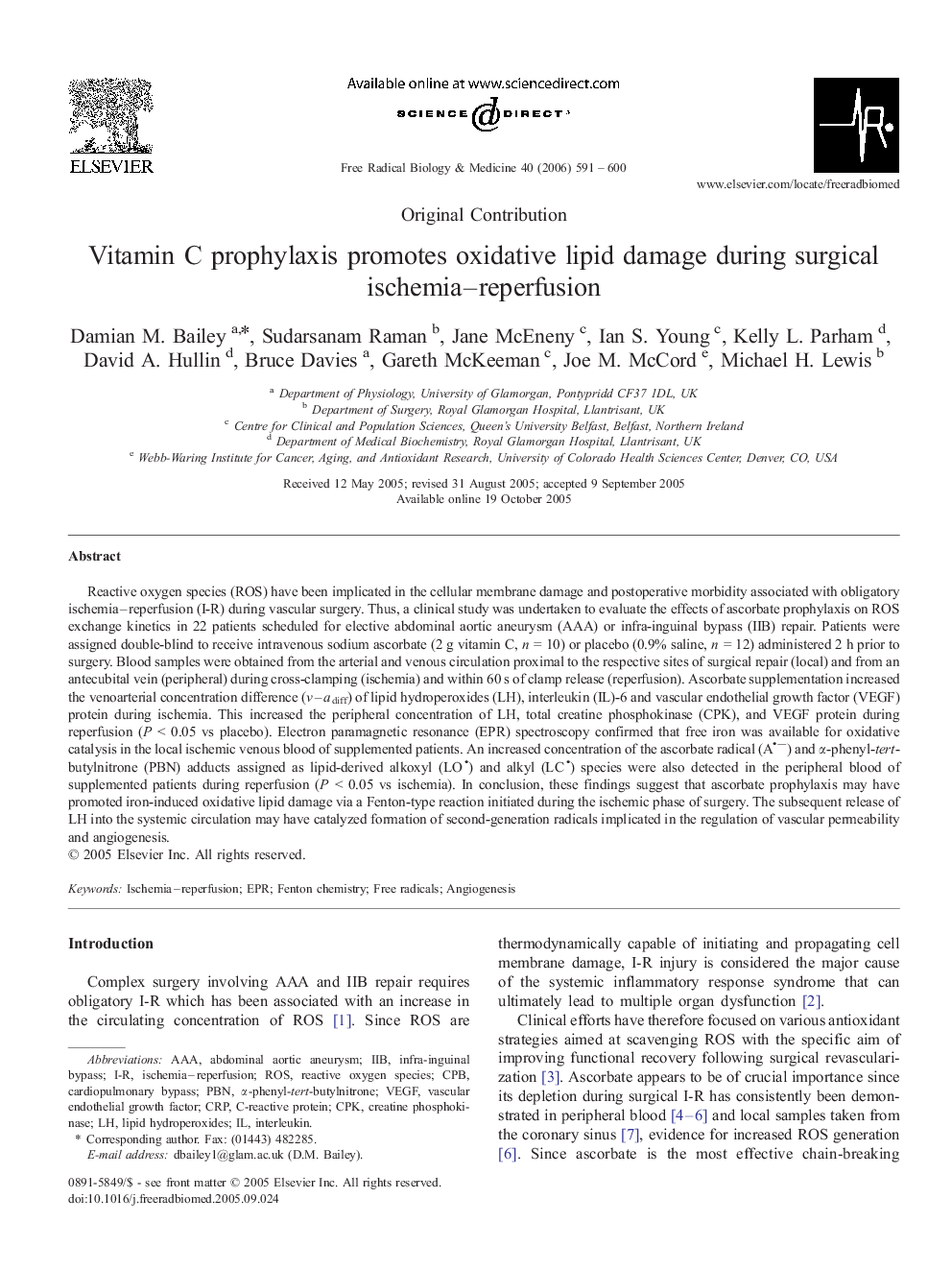| کد مقاله | کد نشریه | سال انتشار | مقاله انگلیسی | نسخه تمام متن |
|---|---|---|---|---|
| 1911726 | 1046830 | 2006 | 10 صفحه PDF | دانلود رایگان |

Reactive oxygen species (ROS) have been implicated in the cellular membrane damage and postoperative morbidity associated with obligatory ischemia–reperfusion (I-R) during vascular surgery. Thus, a clinical study was undertaken to evaluate the effects of ascorbate prophylaxis on ROS exchange kinetics in 22 patients scheduled for elective abdominal aortic aneurysm (AAA) or infra-inguinal bypass (IIB) repair. Patients were assigned double-blind to receive intravenous sodium ascorbate (2 g vitamin C, n = 10) or placebo (0.9% saline, n = 12) administered 2 h prior to surgery. Blood samples were obtained from the arterial and venous circulation proximal to the respective sites of surgical repair (local) and from an antecubital vein (peripheral) during cross-clamping (ischemia) and within 60 s of clamp release (reperfusion). Ascorbate supplementation increased the venoarterial concentration difference (v–adiff) of lipid hydroperoxides (LH), interleukin (IL)-6 and vascular endothelial growth factor (VEGF) protein during ischemia. This increased the peripheral concentration of LH, total creatine phosphokinase (CPK), and VEGF protein during reperfusion (P < 0.05 vs placebo). Electron paramagnetic resonance (EPR) spectroscopy confirmed that free iron was available for oxidative catalysis in the local ischemic venous blood of supplemented patients. An increased concentration of the ascorbate radical (A−) and α-phenyl-tert-butylnitrone (PBN) adducts assigned as lipid-derived alkoxyl (LO) and alkyl (LC) species were also detected in the peripheral blood of supplemented patients during reperfusion (P < 0.05 vs ischemia). In conclusion, these findings suggest that ascorbate prophylaxis may have promoted iron-induced oxidative lipid damage via a Fenton-type reaction initiated during the ischemic phase of surgery. The subsequent release of LH into the systemic circulation may have catalyzed formation of second-generation radicals implicated in the regulation of vascular permeability and angiogenesis.
Journal: Free Radical Biology and Medicine - Volume 40, Issue 4, 15 February 2006, Pages 591–600